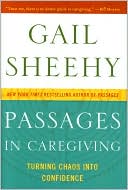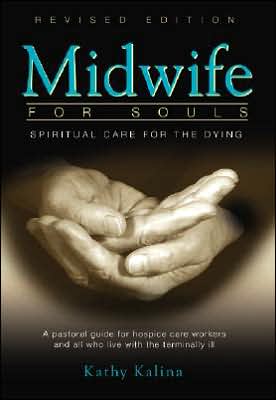Long-Term Care: Managing Across the Continuum
This book is intended as both a college text and a reference source for professionals, policy makers, and regulators. The text provides a sound reference source for anyone wishing to gain a better understanding of the long-term care system. It is concise, but complete, defining the various segments of the system. It also describes how the system developed to its current state, compares it to an ideal system, and projects future trends likely to impact the system. The earlier editions have...
Search in google:
This Book Is Intended As Both A College Text And A Reference Source For Professionals, Policy Makers, And Regulators. The Text Provides A Sound Reference Source For Anyone Wishing To Gain A Better Understanding Of The Long-Term Care System. It Is Concise, But Complete, Defining The Various Segments Of The System. It Also Describes How The System Developed To Its Current State, Compares It To An Ideal System, And Projects Future Trends Likely To Impact The System. The Earlier Editions Have Been Used By Multiple Colleges And Universities For Their Long-Term Care Administration Courses. It Has Also Been Adopted As A Cited Reference For The National Licensing Examination Prepared By The National Association Of Long-Term Care Administrator Boards (NAB) Which Is Used By All Fifty State Licensing Boards (And The District Of Columbia), And For The Certification Examination Of The American College Of Health Care Administrators (ACHCA). It Covers The Full Continuum Of Long-Term Care In Enough Detail To Develop A Sound Understanding Of The System, Yet Does Not Get Bogged Down In Overly-Specific Detail As Some Texts Do.Features:1. Explains How The Long-Term Care System Developed And Compares It To An Ideal System,2. Describes The Primary Types Of Long-Term Care Providers (Nursing Facilities, Assisted Living, Subacute Care, Senior Housing, Community-Based Care), Presenting Each In A Similar Manner, Making It Easy To Compare And Contrast Them,3. Covers How The Providers Interact With Each Other And With Consumers And Regulators - Focusing Specifically On How They Compete, Cooperate, And Integrate; How They Are Regulated; Financing; Quality; Ethical Issues,4. Discusses How Long-Term Care Providers Are Governed And Managed, With Chapters Also Devoted To Leadership And Culture Change, Technology, And Marketing,5. Outlines Future Trends And Their Projected Impact On Long-Term Care, And Discusses How Managers Should Act For Success In The Future. Students Will Find:1. Case Studies With Each Of The Provider Chapters, Showing How They Serve Specific Consumers.2. Discussion Questions And Vocab Terms At The End Of Each Chapter3. Online Supplemental Materials With Both Chapter-Based Interactive Flash Cards And An Overall Glossary On-Line Doody Review Services Reviewer:Katherine L Aguilar, MHA, BS, RN (University of Missouri-Columbia)Description:This is an update of a book designed to develop leaders who are knowledgeable about the everyday internal management of a long-term care facility, as well as to provide leaders with the information they need to diversify services across the healthcare continuum.Purpose:The purpose is to provide an understanding all facets of long-term care, including the transitioning of care across many healthcare sectors. The author successfully assigns labels with descriptions to assist readers with quick recognition of the types of services offered for each segment. Competition in the long-term care industry has become fierce and is compounded by difficulties such as cost containment. Other pressures include societal demands such as understanding competition to better develop marketing strategies. These issues require leaders to be more than experts and this book provides the tools to accomplish this.Audience:The book is intended for students seeking long-term care administrative degrees, but it would be valuable for any practicing healthcare professional. The emphasis on providing care to the aging population in diverse settings is a nice and needed focus point. Features:The author discusses the healthcare continuum, from the lowest level of care to the most skilled or highest level of care. All terms and definitions are well described. Understanding the dynamics of change in the healthcare system, utilizing resources, creating a vision by which to remain competitive, and meeting the needs of the aging population are appropriately emphasized. The term "educated consumer" emerges and adds another level to the entire process.Assessment:This book is superb. The organization is logical with each chapter building on the previous one. The discussions of the management of a financial budget in lieu of projected Medicare and Medicaid cuts, developing an organizational culture that will reduce staff turnover, and the portrayal of the consumer as the driver of care all make this book invaluable. The condensing of the chapters on healthcare, hospice care, and adult daycare into one chapter reflects the close interaction of these services. This edition allows readers to "blog" similar topics allowing for expansion into other areas that require more refinement such as organizational culture change. Even an experienced manager could glean much from this book. I have read many similar books, but reading this one is equivalent to gaining years of actual experience. It forces readers to think beyond what is written, enabling them to create a vision that unfolds with every chapter. Healthcare trends are constantly shifting and the long-term care manager must learn to stay competitive in this changing market, justifying this new edition.
\ From The CriticsReviewer: Katherine L Aguilar, MHA, BS, RN (University of Missouri-Columbia)\ Description: This is an update of a book designed to develop leaders who are knowledgeable about the everyday internal management of a long-term care facility, as well as to provide leaders with the information they need to diversify services across the healthcare continuum.\ Purpose: The purpose is to provide an understanding all facets of long-term care, including the transitioning of care across many healthcare sectors. The author successfully assigns labels with descriptions to assist readers with quick recognition of the types of services offered for each segment. Competition in the long-term care industry has become fierce and is compounded by difficulties such as cost containment. Other pressures include societal demands such as understanding competition to better develop marketing strategies. These issues require leaders to be more than experts and this book provides the tools to accomplish this.\ Audience: "The book is intended for students seeking long-term care administrative degrees, but it would be valuable for any practicing healthcare professional. The emphasis on providing care to the aging population in diverse settings is a nice and needed focus point. "\ Features: The author discusses the healthcare continuum, from the lowest level of care to the most skilled or highest level of care. All terms and definitions are well described. Understanding the dynamics of change in the healthcare system, utilizing resources, creating a vision by which to remain competitive, and meeting the needs of the aging population are appropriately emphasized. The term "educated consumer" emerges and adds another level to the entire process.\ Assessment: This book is superb. The organization is logical with each chapter building on the previous one. The discussions of the management of a financial budget in lieu of projected Medicare and Medicaid cuts, developing an organizational culture that will reduce staff turnover, and the portrayal of the consumer as the driver of care all make this book invaluable. The condensing of the chapters on healthcare, hospice care, and adult daycare into one chapter reflects the close interaction of these services. This edition allows readers to "blog" similar topics allowing for expansion into other areas that require more refinement such as organizational culture change. Even an experienced manager could glean much from this book. I have read many similar books, but reading this one is equivalent to gaining years of actual experience. It forces readers to think beyond what is written, enabling them to create a vision that unfolds with every chapter. Healthcare trends are constantly shifting and the long-term care manager must learn to stay competitive in this changing market, justifying this new edition.\ \ \ \ \ From The CriticsReviewer: Katherine L Aguilar, MHA, BS, RN (University of Missouri-Columbia) \ Description: This is an update of a book designed to develop leaders who are knowledgeable about the everyday internal management of a long-term care facility, as well as to provide leaders with the information they need to diversify services across the healthcare continuum.\ Purpose: The purpose is to provide an understanding all facets of long-term care, including the transitioning of care across many healthcare sectors. The author successfully assigns labels with descriptions to assist readers with quick recognition of the types of services offered for each segment. Competition in the long-term care industry has become fierce and is compounded by difficulties such as cost containment. Other pressures include societal demands such as understanding competition to better develop marketing strategies. These issues require leaders to be more than experts and this book provides the tools to accomplish this.\ Audience: "The book is intended for students seeking long-term care administrative degrees, but it would be valuable for any practicing healthcare professional. The emphasis on providing care to the aging population in diverse settings is a nice and needed focus point. \ Features: The author discusses the healthcare continuum, from the lowest level of care to the most skilled or highest level of care. All terms and definitions are well described. Understanding the dynamics of change in the healthcare system, utilizing resources, creating a vision by which to remain competitive, and meeting the needs of the aging population are appropriately emphasized. The term "educated consumer" emerges and adds another level to the entire process.\ Assessment: This book is superb. The organization is logical with each chapter building on the previous one. The discussions of the management of a financial budget in lieu of projected Medicare and Medicaid cuts, developing an organizational culture that will reduce staff turnover, and the portrayal of the consumer as the driver of care all make this book invaluable. The condensing of the chapters on healthcare, hospice care, and adult daycare into one chapter reflects the close interaction of these services. This edition allows readers to "blog" similar topics allowing for expansion into other areas that require more refinement such as organizational culture change. Even an experienced manager could glean much from this book. I have read many similar books, but reading this one is equivalent to gaining years of actual experience. It forces readers to think beyond what is written, enabling them to create a vision that unfolds with every chapter. Healthcare trends are constantly shifting and the long-term care manager must learn to stay competitive in this changing market, justifying this new edition.\ \








